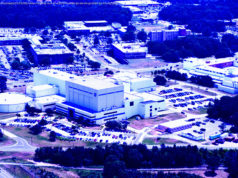Creating light-hearted entertainment is heavy technological work, according to the networking pros who help run DreamWorks Animation’s IT.
The creation of CGI movies is enormously demanding from a network standpoint. Animation and rendering require very low input latency and create huge files that have to be readily available, which poses technological challenges to the DreamWorks networking team.
+ALSO ON NETWORK WORLD: What Cisco’s new programmable switches mean for you + Trend: Colocation facilities provide tools to manage data center infrastructure
It’s a unique challenge, according to Scott Miller, a technology fellow for engineering and infrastructure at DreamWorks.
“Don’ t let the artists hear us say this, but we’ re a digital manufacturer, ” he told Network World. “Our product is data that, when projected through a digital projector with a lightbulb behind it, looks like a movie and is very compelling and interesting to watch, but at the heart of it, we take data sets and process them and make new data sets.”
It’s complicated work, Miller said – in essence, DreamWorks’ artists are describing what they want their vision to look like, and using sophisticated technology to generate the final art.
The company’s edge network is all Aruba wireless, and uses 350 access points to cover both indoor and outdoor areas of its 11-acre campus in Glendale, Calif., north of Los Angeles. The idea is to let DreamWorks’ creative types do their work from anywhere on-site, from any device – whether it’s a powerful workstation with a wired connection in an office or a tablet under a tree.
Part of that, according to network operations supervisor Keith McKay, is using user-based controls in Aruba’s ClearPass system to secure the network. Activity is tracked to individual user IDs, instead of MAC addresses.
“We can actually sort people into buckets and place them on the network, wired or wirelessly, as we need to, ” he said.
They’ d like to go all-software-defined, but – surprisingly for such a tech-focused environment – there are legacy systems that still have to be serviced.
“What it does is it allows anybody who might want to use our intellectual property anywhere within the company [to access] those data sets using the same file system and using mostly the same software tools that they used to create the stuff 10 or 15 years ago.”
DreamWorks does a lot of motion capture to generate realistic-looking movements for characters. The data sets for this aren’ t overly large – it’s just sensors recording their positions relative to each other, after all – but the subsequent processing and rendering of that data into something visually striking is computationally intensive. What’s more, even if the amount of raw data is relatively small, motion capture is highly sensitive to latency – one of the company’s biggest networking concerns.
Much of the heaviest lifting, from a storage and compute perspective, is done for backgrounds and digital backdrops, Miller said.
“Some of the bigger data sets we have are the ones that are simulations, ” he said. “Simulating water, fire, dust, doing procedural geometry simulations for things like a forest, where every leaf and blade of grass moves around – those data sets can get pretty large.”
Another unique aspect to DreamWorks’ network is its usage pattern, McKay noted. During the day, the network is a latency-sensitive system designed to help the creative workers do their jobs, while it transforms into an HPC shop devoted to heavyweight rendering tasks at night.
“The networks here are backwards from every other enterprise I’ ve ever worked in, in that the time the network is busiest is from 8 p.m. to 8 a.m. – that’s when rendering happens, ” he said. “When we start interactive access in the morning, network utilization through our core drops by a factor of four.”
There’s plenty to do to make sure that transition can happen smoothly, according to Miller and McKay, most of which centers on working toward full network utilization. At night during the HPC phase, all uplinks need to be carrying data, but those uplinks form a mesh topology during the day, helping to provide low latency.
McKay said that the biggest day-to-day challenge for DreamWorks’ network is supporting multiple tenants on the company’s campus, and different “shows” will have different needs from an IT perspective. A big part of that is each show going through various stages of the development process.
“From a scriptwriter’s standpoint, they don’ t need that much network horsepower, ” he said. “But by the time a show has gone through script and story and storyboarding and is now getting into rigging and character effect, each one of those departments’ network needs change over time.”






